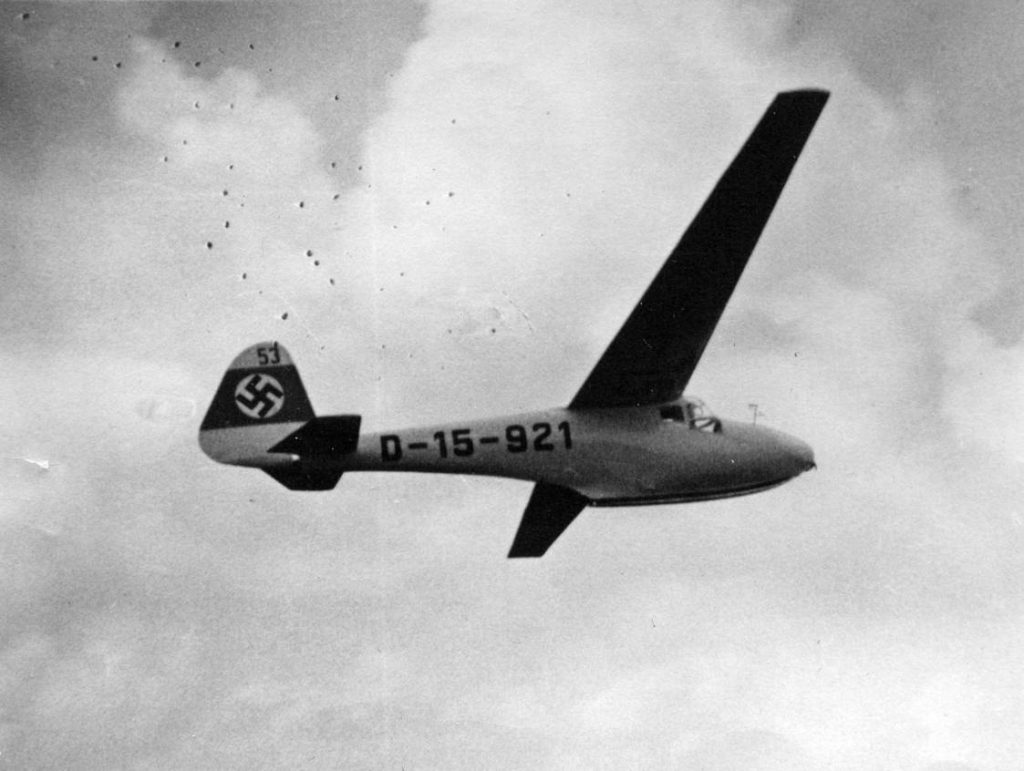Safer and Simpler Flying
With the fs16, the Akaflieg wanted to develop a sailplane with the best possible performance, while simultaneously being safe and easy to handle. Examinations and radical ideas had to be dispensed with due to the requirements of flight operations. That’s how a monocoque high-wing sailplane with a 16 m wingspan came to be. Since the raised rear fuselage design of the F.1 proved to be a good idea, this was retained for the fs16. The use of endplates instead of a conventional tail however didn’t improve flight performance as much as expected, so the fs16 was built with a conventional tail and rudder instead. It also received a lengthened fuselage compared to the F.1. Furthermore, the skid and tailskid configuration was changed to reduce loads on the fuselage in case of a ground loop or a slip landing. To increase their effectiveness, the ailerons had their depth increased and their joints were fastened directly to the wing spar. The ailerons were built out of duralumin to test the use of light alloys in sailplanes.
Specifications
| Construction | 1936 |
| First flight | February 1937 |
| Method of construction | Wood, Duralumin |
| Wingspan | 16 m |
| Wing area | 13,3 m² |
| Aspect ratio | 19 |
| Profile | NACA 2318 bis 0,094 b/2 NACA 2315 bis 0,31 b/2 NACA 4312 bis b/2 |
| Dihedral angle | 0.5° an der Flügeloberseite |
| Wing sweep | 0° (t/4) |
| Washout | 5° |
| Wing taper | 0,32 |
| Aileron area | 1,44 m² |
| Tailplane area | 1,68 m² |
| Vertical stabilizer area | 1,135 m² |
| Length | 6,13 m |
| Height | 1,12 m |
| Empty weight | 120 kg |
| MTOW | 200 kg |
| Glide ratio | 27 |


